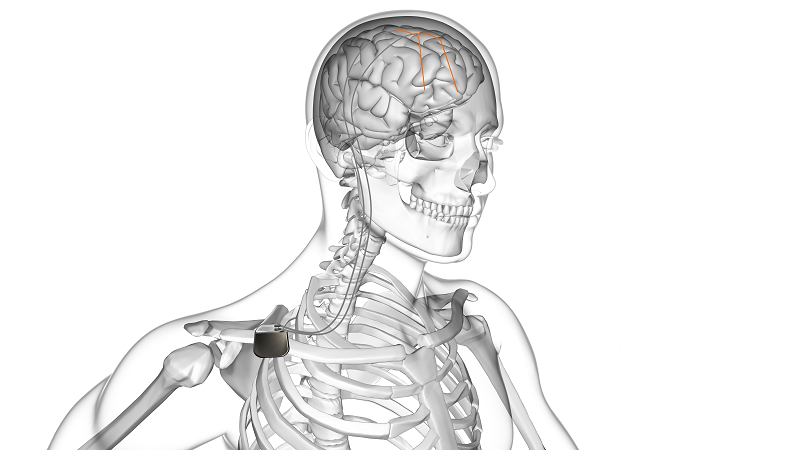
Sandvik’s EXERA® medical wire is specifically developed to transmit, sense or stimulate signals within the body. When it comes to stimulation therapy, medical wire plays an important role in providing electrical energy to precise parts of the body, such as the brain, spine or wherever natural signals have been disrupted.
Medical wire-based stimulation devices are used for many conditions that result in cognitive, motion or pain difficulties. For example, epilepsy, where excessive and uncontrolled burst of energy from nerve cells in the brain can lead to potential fits or seizures, medical devices such as vagus nerve stimulators or intercranial stimulators can be used to treat this condition. For other motion disorders, deep brain stimulation can enable users to regain control of their body. Medical devices are implanted close to the nerve that requires stimulation, meaning that metals and coatings used to manufacture the wire must be biocompatible as not to cause harm to or introduce toxins.
Much like any medical device that is implanted internally, fine medical wire for stimulation therapy must be lubricious and malleable enough to be precisely directed in the body so that the right area is targeted for stimulation.
“There are typically multiple wires used in a very small space for the stimulation,” explains Gary Davies, manager at Sandvik Materials Technology’s business unit for medical wire manufacturing. “These wires usually have a dielectric coating, so they don’t short to each other and disrupt the signal or electrical energy that are being sent to the nerve to correct the problem. This has to be done in a precise and reliable way as we don’t want to introduce stimulation that will not have the desired effect.”
Deep brain, spine and other stimulation therapies
Conditions such as Parkinson’s, epilepsy, dystonia, essential tremors and obsessive-compulsive disorder (OCD) can be significantly improved with a neurostimulator. Similar to a pacemaker, the amount of stimulation is controlled by a device situated under the skin, usually located in the upper chest. Medical wire connects this device to electrodes that are implanted in the brain, acting as the stimulator.
For spinal cord therapy, medical devices are used to mask pain signals. For this application, wire delivers electrical pulses along the spinal cord to modify these pain signals before they reach the brain so patients suffering from chronic pain conditions will not be as reliant on opioid medications.
Medical wire stimulation is also used in other areas of the body, such as stimulating the apical region of the cochlea for hearing implants.
For any of the above applications, two essential characteristics needed for stimulation medical wire is conductivity and durability. This is something that the EXERA® range achieves with both metal manufacturing and the choice of coating that is used. Sandvik experts in metallurgy recommend the most appropriate metal material that offers excellent conductive properties, as well as being durable and fatigue resistant enough for reliable long term use.
The wire coating is also important, both in regards to durability and biocompatibility. According to Davies: “It is important that we use these PTFE or other biocompatible coatings because of the restricted space. They have to be very thin, but they have to be very robust and non-toxic.”
Working closely with medical device manufacturers, Sandvik offers experience and expertise to ensure that medical wire components achieve their end-goal.
For more information about EXERA® fine medical wire-components used in stimulation therapy, including a full list of materials or to contact Sandvik about developing a medical field device, visit their website.



